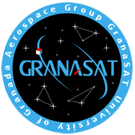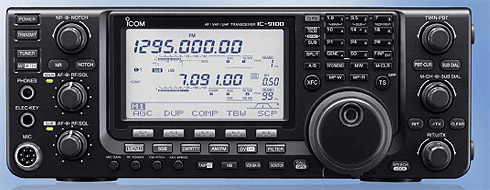Radio equipment used
In our ground station, we make use of a variety of radio equipment for different frequency ranges.
The Keenwood TM-241 transceiver is used for the VHF band, while a Kennwood TM-441 is used in UHF frequencies.
Another versatile device is the SDR receiver, dedicated to FunCube Dongle satellites.
ICOM-9100
The IC-9100 contains years of advanced Icom technology in a compact, all-in-one HF/VHF/UHF transceiver. This radio covers most ham bands and modes, and provides a wide variety of operating styles. Whether you’re working DX QSO, RTTY, D-STAR DV, satellite or even moonbounce, Icom’s years of technological experience is working right along with you.
Latest USB Driver and Firmware
Download the USB Driver | Download the Firmware
Video Review
George Thomas, W5JDX, of Ham Nation and AmateurLogic.tv provides an in depth review of the IC-9100.
 Multiple-band, multiple-mode
Multiple-band, multiple-mode
HF to 1200MHz Multi-band in one transceiver
The IC-9100 fully covers the HF/50, 144, 430/440 amateur bands in multiple modes. By installing the optional UX-9100 1200MHz band unit, you can be operational on the 1200MHz band immediately.
Independent dual receivers
 The IC-9100 has two independent receivers in one radio and receives two different bands simultaneously (See the right table for available main and sub band combinations). In addition, the main and sub-band audio can be controlled with independent volume and squelch knobs, and received audio can be heard separately when external speakers are connected.
The IC-9100 has two independent receivers in one radio and receives two different bands simultaneously (See the right table for available main and sub band combinations). In addition, the main and sub-band audio can be controlled with independent volume and squelch knobs, and received audio can be heard separately when external speakers are connected.
 Satellite mode operation
Satellite mode operation
The satellite mode synchronizes the uplink (transmitting) and downlink (receiving) frequencies, and tracks the frequencies in the same tuning step. This function matches both normal and reverse mode satellites. Compensation of the Doppler effect can be performed easily. 20 alphanumeric satellite memory channels store frequencies, mode and tone settings for quick set-up.
Optional D-STAR DV mode (Digital Smart Technology for Amateur Radio)
 The optional UT-121 provides D-STAR DV mode digital voice and low speed data communications. Linking of D-STAR repeaters over the Internet allows you to communicate virtually anywhere. In addition to 144MHz, 430/440MH and 1200MHz band, the D-STAR DV mode can be used in 28MHz and 50MHz band simplex mode.
The optional UT-121 provides D-STAR DV mode digital voice and low speed data communications. Linking of D-STAR repeaters over the Internet allows you to communicate virtually anywhere. In addition to 144MHz, 430/440MH and 1200MHz band, the D-STAR DV mode can be used in 28MHz and 50MHz band simplex mode.
- D-STAR DR mode operation makes it easy to acess D-STAR repeaters
- GPS position reporting functions (External GPS receiver can be connected via data 1 connector. Also, position data can be entered manually.)
- One-touch reply function
 Digital call sign squelch
Digital call sign squelch- Received call sign record
- Automatic received message display
RTTY demodulator and decoder
The built-in RTTY demodulator and decoder allow you to instantly read an RTTY message on the display. No external units or PC required. The built-in tuning indicator visually helps in critical tuning.
Ample CW functions
All of the following CW capabilities are included in the IC-9100:
- 4 channels of keyer with 70 characters of transmit memory per channel
- Multi-function electronic keyer with adjustable keying speed from 6-48 wpm, dot-dash ratio from 1:1:2.8 to 1:1:4.5 and paddle polarity
- Bug keyer and full break-in function
Basic technologies that support the IC-9100
Double conversion superheterodyne
Much like the technology in Icom’s high-end HF transceivers, Icom has used a double conversion superheterodyne system* and an image rejection mixer in the IC-9100. The IC-9100 has dedicated receiver circuits from the antenna connector to the 2nd image rejection mixer for each band, and this improves inband IMD characteristics by simplifying the electronic circuitry.
*A triple conversion system is used for the 1200MHz band.

+30dBm class third-order intercept point
Using receiver design techniques introduced in Icom’s highest grade HF transceivers, the IC-9100 has an IP3 of +30dBm (typ.) in the HF bands. In the VHF/UHF bands, the IC-9100 also provides improved IP3 performance over the previous models.
 Three first IF filters (3/6/15kHz) for HF/50MHz band
Three first IF filters (3/6/15kHz) for HF/50MHz band
The IC-9100 comes with a built-in 15kHz 1st IF filter and can accept up to two optional filters (3kHz FL-431 and 6kHz FL-430). By changing the first IF filter width according to the operating mode, the desired signal is protected from adjacent inband signals at the later stages. The 3kHz first IF filter is especially effective in the CW and SSB modes.
Built-in antenna tuner for HF/50MHz band
 The internal antenna tuner automatically tunes for low SWR in the HF and 50MHz bands. Once you transmit on a frequency the tuner can instantly retune the frequency using its built-in memory.
The internal antenna tuner automatically tunes for low SWR in the HF and 50MHz bands. Once you transmit on a frequency the tuner can instantly retune the frequency using its built-in memory.
Antenna connectors
Two antenna connectors for HF and 50MHz bands, with an automatic antenna selector, and one each for 144MHz, 430/440MHz and 1200MHz*are included in the IC-9100.
With optional UX-9100.
High frequency stability
A high stability TCXO crystal oscillator provides ±0.5ppm of high frequency stability over a wide temperature range (0°C to +50°C). This allows for a long steady operating time in the RTTY or SSTV modes.
 HF/50MHz, 144MHz 100W, 430/440MHz 75W
HF/50MHz, 144MHz 100W, 430/440MHz 75W
The IC-9100 uses high efficiency power amplifiers, and large heat sink, providing stable output power, even during long periods of operation.
DSP features and functions
32-bit floating point DSP and 24-bit AD/DA converters
The heart of the IC-9100 is the proven combination of the 32-bit floating point DSP and 24-bit AD/DA converters. This powerful combination supports many digital processing features such as modulation/demodulation, IF filter, twin PBT, AGC, noise blanker, noise reduction, manual and auto notch filters, speech compressor, RTTY demodulator/decoder functions.

AGC loop management
Digital IF filters, manual notch filter and other digital functions are incorporated in the AGC loop management controlled by the DSP unit. The AGC effectively works for the desired signal and rejects blocking by strong adjacent signals out of the filter passband. The AGC time constant presets (slow, medium and fast) give the flexibility and speed needed for working pile-ups.
Digital IF filter
The IC-9100 DSP allows you to «build your own» digital IF filter. you can quickly choose bandwidth, shape factor, and center frequency, so that you can work that rare DX station. Three filter memories allow you to change filter settings instantly, a great help during contesting or other tough conditions.
Digital twin PBT and IF shift
After «building your own» digital IF filter, you can use the digital twin Passband Tuning (PBT) to shift and narrow the IF passband until the interference is gone and you can clearly hear that weak signal.
Noise reduction
The 16-step variable noise reduction can significantly enhance the receiver’s signal-to-noise ratio, giving you a clean, clear audio signal that may make the difference between making the contact or not.
Noise Blanker
The digital noise blanker reduces interference from pulse-type noise such as engine ignition. The noise blanker provides significant reduction of pulse-type noise. The noise blanker allows you to change the threshold level as well as blank duration parameter and attenuation level.
Manual notch filter and auto notch filter
The manual notch filter controlled by the DSP has extremely sharp characteristics and provides more than 70dB of attenuation. The notch filter width is selectable from 2 types, allowing you to select the suitable filter width for the operating mode and band. It eliminates persistent beat tones without affecting the AGC loop function. In addition, the automatic notch filter tracks and eliminates two or more interfering signals, such as beat signals and carriers or tones from digital signals.
Sophisticated operation with expansion capabilities
 Large, multi-function LCD
Large, multi-function LCD
The large, multi-function LCD displays frequency, 9-character channel name, channel number, multi functional meter (includes S-meter, RF output, SWR and ALC level) for both the main and sub bands vertically. The dot-matrix portion of the LCD shows the following items:
- Channel name
- Function key assignment
- Band scope
- RTTY decoder screen
- Memory keyer contents
- Graphical SWR scale
- D-STAR call sign, message, DR list
- GPS position information
Up to 424 memory channels *
Each band (HF/50MHz, 144MHz, 430/440MHz and 1200MHz*) has a total of 99 memory channels for storing frequencies, mode and other information. The IC-9100 has 6 scan edge channels for programmed memory, and a call channel for each band.
Sophisticated operation with expansion capabilties
 USB connector for PC control
USB connector for PC control
The IC-9100 has a standard type B USB connector and can be connected to the PC. Modulation input, audio output, RTTY demodulatior output and CI-V command can be controlled via the USB cable. Also, the conventional CI-V remote control jack is built in to the IC-9100.
Download the USB Driver | Download the Firmware
Optional CS-9100 programming software
When used with the optional CS-9100 programming software, memory channels, band edges, repeater list for DR mode, D-STAR callsign and GPS memory channels can be easily edited with a PC. A USB cable is required for PC connection.
 Optional RS-BA1 IP remote control software
Optional RS-BA1 IP remote control software
The optional RS-BA1 allows you to use the IC-9100 from another room using your home network, or even from a remote location over the Internet. The RS-BA1 has low voice latency.
Other outstanding features
- Built-in voice synthesizer announces operating frequency, mode and S-meter level
- User programmable band edge beep (can be disabled)
- VSC (Voice Squelch Control) function
- AFC function (FM/DV mode)
- RF speech compressor
- Microphone equalizer and adjustable transmit bandwidth
- Two preamplifier types for HF/50MHz bands: Preamp 1: Increases low level signal improving intermodulation characteristics, Preamp 2: High gain preamplifier
- 20dB built-in attenuator
- CTCSS and DTCS tone encoder and decoder
- Triple band stacking register
- Quick split function and frequency lock function
- RIT and ΔTx variable up to ±9.999kHz
- Audio equalizer function
- SSB/CW synchronous tuning automatically shifts the carrier point when switching between CW and LSB/USB modes
- 1Hz pitch tuning and display
- Program scan, memory scan, select memory scan, mode select scan and Δf scan
- Automatic tuning steps
- 9600bps data socket
- AH-4 control circuit
- Automatic repeater function* and one-touch repeater function.
(*USA and KOR versions only)

TNC Tiny-2

TNC URE
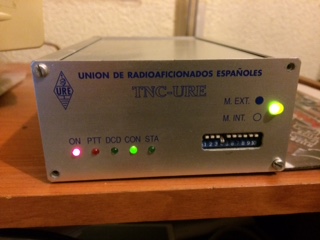 La TNC mostrada a continuación usa un microprocesador Zilog Z80 funcionando a 9,8304 Mhz .
La TNC mostrada a continuación usa un microprocesador Zilog Z80 funcionando a 9,8304 Mhz .
Incorpora el Modem estándar de 1200 bps Bell-202 y un modem G3RUH para trabajar a 9600 bps. 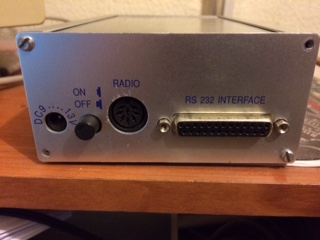
Keenwood TM-241
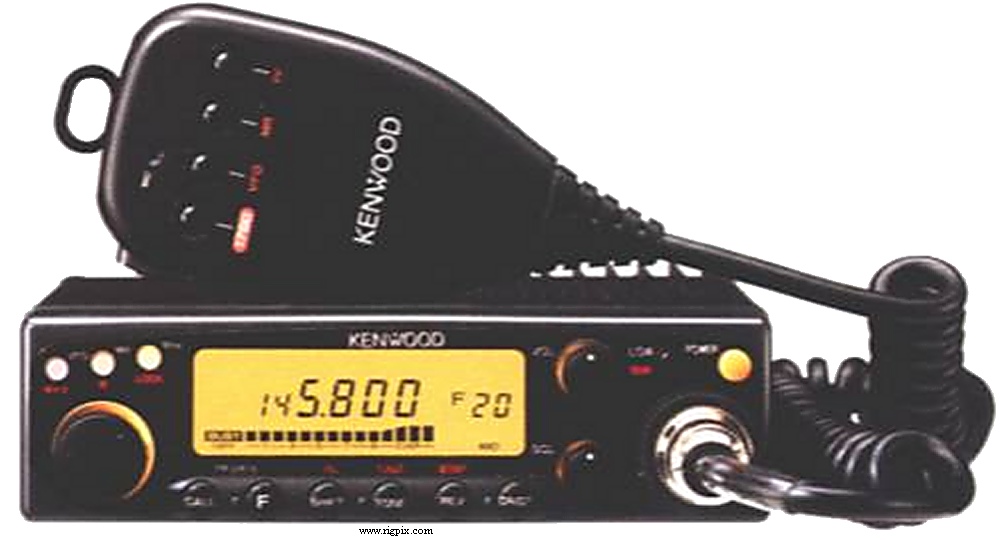
Technical details:
| GENERAL | |
| Antenna Impedance | 50 ohms |
| Current Drain Receive | Less than 600 mA |
| Current Drain Transmit | Less than 11 A |
| Dimensions (W x H x D) | 5.51 x 6.3 x 1.57 in. (140 x 40 x 160 mm) |
| Frequency Range | TX: 144 – 148 MHz RX: 118 – 174 MHz |
| Ground | Negative |
| Microphone Impedance | 500-600 ohms |
| Mode | F3E (FM), A3E (AM) (RX only: 118 – 174 MHz) |
| Operating Temperature Range | -20°C – 60°C |
| Power Requirement | 13.8V DC (±15%) |
| Weight (approx.) | 2.4 lbs. (1.1 kg) |
| RECEIVER | |
| Audio Output Power | More than 2W (8 ohms, 5% distortion) |
| Circuitry | Double conversion superheterodyne |
| Intermediate Frequency 1st IF | 10.7 MHz |
| Intermediate Frequency 2nd IF | 455 kHz |
| Selectivity -6 dB | More than 12 kHz |
| Selectivity -60 dB | Less than 24 kHz |
| Sensitivity (12dB SINAD) | Less than 0.16µV |
| Squelch Sensitivity | Less than 0.10µV |
| TRANSMITTER | |
| Frequency Tolerance | Within ±10 ppm |
| Maximum Frequency Deviation | ±5 kHz |
| Modulation | Reactance modulation |
| Modulation Distortion | Less than 3% |
| RF Output Power HI | 50 W |
| RF Output Power LO | 5 W |
| RF Output Power MID | 10 W |
| Spurious Radiation | Less than -60 dB |
Kennwood TM-441

Technical specifications are similar to the previous model, except for the frequency range, which is, in this case, 430-440 MHz.
FunCube Dongle pro+

This device is a SDR (software defined radio) radio receiver, designed especially for the reception of satellites.
Specifications
- Guaranteed frequency range: 150kHz to 240MHz and 420MHz to 1.9GHz
- Typical frequency coverage: 150kHz to 260MHz and 410MHz to 2.05GHz
- TCXO specified at 0.5ppm (in practice about 1.5ppm)
- 192kHz sampling rate
- Extremely simple hardware setup, just two connections, an “in” and an “out”:
- Standard SMA female antenna port
- USB 1.x type A male connection
- Eleven discrete hardware front end filters including:
- 6MHz 3dB bandwidth (10MHz at -40dB) SAW filter for the 2m band.
- 20MHz 3dB bandwidth (42MHz at -40dB) SAW filter for the 70cm band
- Third- and fifth-order LC bandpass filters for other bands
- Front end LNA OIP3 30dB
- Typical noise figures:
- 50MHz 2.5dB
- 145MHz 3.5dB
- 435MHz 3.5dB
- 1296MHz 5.5dB
- Typical NFM 12dB SINAD measurements:
- 145MHz 0.15uV
- 435MHz 0.15uV
- No additional drivers required for Linux, OSX or Windows
- Integrated 5V bias T switchable from software
All the information about this receiver may be found in the web page www.funcubedongle.com. More precisely, HERE you can find documentation, software, source code, etc.
